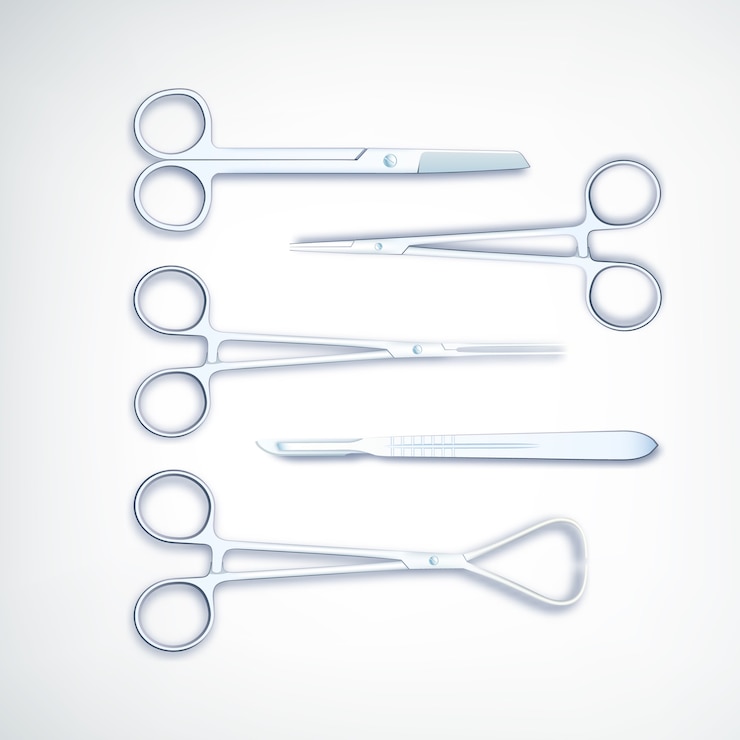
Surgical procedures are complex and require specialized care and expertise—something most people simply don’t have. Sure, you might have seen an action hero patch up their own wounds in a movie, but in reality, medical care is not something you should attempt on your own. Unlike other fields, trying to handle a medical procedure without the proper qualifications can lead to serious consequences.
For example, removing surgical staples at home is not something you should consider. While it’s natural to be curious and ask questions, searching for the wrong information online can lead you down a dangerous rabbit hole, sometimes with harmful outcomes. That said, it’s important to know the basics about surgical staples and why they’re used. Understanding this can help you take better care of your health or support a loved one recovering from surgery.
What Are Surgical Staples Used For?
As the name suggests, surgical staples are used after surgery to close an incision—the cut made during the procedure. Whether your surgeon chooses staples over traditional stitches depends on several factors, including the type of procedure and personal medical judgment. While some stitches can dissolve over time as your wound heals, most surgical staples don’t dissolve (except for specific types). Their primary job is to hold the skin together after surgery until the wound has healed enough.
Here are the common types of surgical staples:
1. Plastic Staples
Plastic staples are often chosen to minimize scarring and are perfect for patients allergic to metal staples. This option offers an alternative for those looking for a low-impact healing process.
2. Metal Staples
These are typically made of titanium, known for its strength and compatibility with human tissue. Titanium staples are less likely to cause infections or inflammation, but they do require careful monitoring to ensure proper healing.
3. Polylactide-Polyglycolide Copolymer Staples
Unlike most staples, these are specially designed to dissolve over time. They are commonly used in plastic surgery for a seamless healing process with little to no visible scarring.
Staples are often used for larger or more complex wounds because they’re easier and faster to apply compared to stitches. They also speed up the healing process in many cases.
Are Staples Permanent?
No, surgical staples are not permanent. They’re typically removed once they’ve completed their job of supporting your wound during the initial healing process. The exact time frame for removal can vary depending on the type of incision, its size, location, and complexity. For example, vertical incisions may take longer to heal than horizontal ones, which could mean you’ll need to keep the staples in for a longer period.
In some cases, you may need to consult your doctor sooner than expected, especially if you notice signs of infection, such as the wound leaking blood or pus, or if you suspect the staples aren’t placed or functioning as they should. Generally, staples are left in place anywhere from a few days to a couple of weeks, depending on the wound’s healing progress and your doctor’s recommendations.
How to Minimize Risks and Take Proper Care of Surgical Staples
Even though surgical staples are effective and convenient, they still require careful attention to prevent complications like infections or improper healing. Here are a few tips to take care of a wound with surgical staples:
– Follow Your Doctor’s Instructions: Always stick to the guidelines your doctor gives you regarding wound care. Do not take any actions—no matter how small—without their approval.
– Keep the Area Clean and Protected: If your bandage is removed, clean the area carefully with sterile materials. When re-bandaging, use clean, infection-free products.
– Avoid Getting the Area Wet: Keep your bandage dry at all times. If it accidentally gets wet, replace it immediately, provided your doctor has allowed you to handle your own bandages.
– Stay in Contact with Your Doctor: Keep your doctor’s contact information handy in case you notice any unusual symptoms or issues with your wound or the staples.
Final Thoughts
Surgical staples are a great alternative to traditional stitches and can make the healing process quicker and smoother. However, as with any medical procedure, proper care and monitoring are essential. Never attempt to remove surgical staples at home or rely on internet tutorials for such a task. Leave it to a medical professional who knows how to minimize risks and ensure your wound heals correctly. Your health and safety should always come first.




